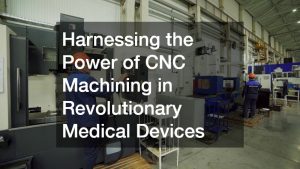The home construction industry has seen significant advancements in technology in recent years. These advancements have revolutionized the way homes are built, making the process more efficient, cost-effective, and safe. Technology has become an integral part of home construction, with various tools and systems being used to streamline the construction process. From commercial sheet metal fabrication services to the end-point of install analytics, there is an ever-growing need for increased technology in this industry.
What is the Home Improvement Industry?
In recent years, the home improvement industry has experienced significant growth and evolution. Home improvement encompasses a wide range of services and products aimed at enhancing the functionality, aesthetics, and value of residential properties.
Key players in the home improvement industry include contractors, plumbers, truss manufacturers, home builders, and suppliers of window products. These professionals offer services such as surveillance analytics, commercial sheet metal fabrication, tankless water heater installation, vrf system service, and local roof replacements.
As the industry continues to expand, the implementation of key analytics has become essential for businesses looking to stay competitive and deliver exceptional service to customers. Key analytics play a crucial role in transforming the way home improvement businesses operate and make data-driven decisions.
How Have Key Analytics Transformed the Home Improvement Industry?
Key analytics refer to the use of data analysis tools and techniques to extract meaningful insights and improve decision-making processes. In the home improvement industry, key analytics have revolutionized the way businesses operate by providing valuable information that helps in identifying trends, optimizing processes, and maximizing efficiency.
One of the significant impacts of key analytics in the home improvement sector is the ability to make informed decisions based on real-time data. By leveraging key analytics tools, businesses can track performance metrics, identify areas for improvement, and make strategic decisions that drive growth and profitability.
Examples of key analytics tools commonly used in the industry include dashboards, predictive analytics software, and inventory management systems. These tools enable businesses to analyze customer behavior, track inventory levels, and optimize pricing strategies to stay ahead of the competition.

What Are the Key Metrics Used in Analyzing Home Improvement Data?
When it comes to analyzing data in the home improvement industry, there are several key metrics that businesses rely on to measure performance and track success. Common key metrics include customer satisfaction scores, sales conversion rates, and average order value.
Tracking these key metrics is essential for businesses to gain insights into customer preferences, identify opportunities for growth, and measure the effectiveness of marketing campaigns. By using key metrics to analyze data, home improvement businesses can make informed decisions that drive revenue and improve customer satisfaction.
Furthermore, by leveraging key metrics, businesses can optimize their operations, streamline processes, and enhance the overall customer experience. Utilizing key metrics effectively can help businesses identify areas for improvement and implement strategies to increase efficiency and productivity.
How Do Businesses Utilize Key Analytics to Improve Customer Experience?
In the home improvement industry, customer experience is a crucial factor that drives loyalty and repeat business. By utilizing key analytics, businesses can personalize their services to meet the unique needs and preferences of customers.
One way that businesses improve customer experience using key analytics is by analyzing customer feedback. By collecting and analyzing feedback data, businesses can gain valuable insights into customer satisfaction levels, identify areas for improvement, and make adjustments to enhance the overall customer experience.
Additionally, key analytics enable businesses to optimize their customer service processes by tracking customer interactions, monitoring response times, and identifying bottlenecks in the customer service workflow. By leveraging key analytics in customer service, businesses can streamline operations, increase efficiency, and deliver exceptional service to customers.
What Role Do Key Analytics Play in Inventory Management in the Home Improvement Industry?
Effective inventory management is critical for home improvement businesses to ensure that they have the right products available at the right time. Key analytics play a crucial role in inventory forecasting, planning, and optimization.
By utilizing key analytics tools, businesses can forecast demand, track inventory levels, and identify trends that impact inventory turnover. This enables businesses to optimize their stock levels, reduce carrying costs, and minimize the risk of stockouts or overstocking.
Furthermore, key analytics help businesses in the home improvement industry to analyze product performance, identify slow-moving items, and make data-driven decisions to improve inventory efficiency. By leveraging key analytics in inventory management, businesses can increase profitability, reduce waste, and improve customer satisfaction.

How Do Key Analytics Help in Marketing and Advertising for Home Improvement Businesses?
Marketing and advertising play a vital role in promoting home improvement products and services to potential customers. Key analytics enable businesses to create targeted advertising strategies that reach the right audience, at the right time, with the right message.
By analyzing customer data and market trends, businesses can tailor their advertising campaigns to specific demographics, geographic locations, and customer preferences. This helps businesses maximize the effectiveness of their marketing efforts and achieve a higher return on investment.
Moreover, key analytics enable businesses to measure the effectiveness of marketing campaigns by tracking key performance indicators such as click-through rates, conversion rates, and customer acquisition costs. By analyzing these metrics, businesses can make data-driven decisions to optimize their marketing strategy and improve campaign performance.
What Are the Benefits of Using Key Analytics in Pricing Strategies for Home Improvement Products?
One of the key advantages of technology in home construction is the improved efficiency it brings to the construction process. With the use of advanced tools and equipment, tasks that would have taken weeks or months to complete can now be done in a fraction of the time. This not only speeds up the construction process but also helps to save costs on labor and materials.
Technology also allows for more precise planning and design, reducing errors and minimizing the need for rework. This can result in cost savings for home builders and homeowners alike. With the use of technology, home construction projects can be completed more quickly and efficiently, leading to a faster return on investment for builders.
Another benefit of technology in home construction is the improved safety it provides for workers on construction sites. Advanced tools and equipment, such as drones and robots, can be used to perform tasks that are too dangerous for humans. This reduces the risk of accidents and injuries on the job site, making construction work safer for everyone involved.
Pricing plays a crucial role in the success of home improvement businesses, as it directly impacts revenue, profitability, and competitive positioning. Key analytics help businesses optimize their pricing strategies by analyzing market trends, competitor pricing, and customer behavior.
One of the other significant benefits of using key analytics in pricing strategies is dynamic pricing optimization. By analyzing real-time data, businesses can adjust prices based on factors such as demand, seasonality, and competitor pricing to maximize profit margins and sales revenue.
Additionally, key analytics enable businesses to conduct competitor price analysis, identify pricing gaps, and make informed pricing decisions that help them stay competitive in the market. By leveraging key analytics in pricing strategies, businesses can optimize their pricing structure, attract more customers, and increase market share.

How Can Key Analytics Improve Operational Efficiency in the Home Improvement Sector?
Operational efficiency is essential for home improvement businesses to reduce costs, improve productivity, and deliver high-quality services to customers. Key analytics help businesses streamline their operations, automate processes, and optimize resource allocation for maximum efficiency.
One way that key analytics improve operational efficiency is through process automation. By automating repetitive tasks, businesses can save time, reduce human error, and increase productivity. This allows employees to focus on more strategic activities that drive business growth.
Furthermore, key analytics help businesses optimize their resource allocation by analyzing data on workforce performance, project timelines, and resource utilization. By leveraging key analytics, businesses can identify inefficiencies, allocate resources effectively, and optimize operational processes for improved efficiency and performance.
Technology has revolutionized home construction analytics by enabling the collection and analysis of vast amounts of data. Builders can now use advanced tools and software to track every aspect of a construction project, from materials used to labor hours worked. This data can be analyzed to identify trends, inefficiencies, and opportunities for improvement in the construction process. By leveraging key analytics, builders can make informed decisions that lead to more efficient and cost-effective construction projects.
Molecular sieve adsorbents have a important role key analytics in home construction, filtering out unwanted gases and liquids from construction materials. This helps to improve the quality of materials used in construction projects, leading to more durable and sustainable homes. Surveillance analytics can also be used to monitor construction sites, ensuring that workers are following safety protocols and that materials are being used efficiently.
Builders who incorporate key analytics into their construction projects can gain a competitive edge in the market. By leveraging data and technology to make informed decisions, builders can reduce costs, improve quality, and deliver better homes to their customers.
What Challenges Do Home Improvement Businesses Face in Implementing Key Analytics?
While key analytics offer numerous benefits to home improvement businesses, there are several challenges that businesses may face when implementing analytics strategies. Common challenges include data quality and integration issues, staff training, and privacy concerns.
Data quality and integration issues can pose significant challenges for businesses looking to leverage key analytics effectively. Inaccurate or incomplete data can lead to faulty insights and poor decision-making, highlighting the importance of data quality management and integration across different systems.
Moreover, staff training and skill development are crucial for businesses to ensure that employees have the knowledge and expertise to use key analytics tools effectively. Investing in training programs and continuous learning initiatives can help businesses overcome the skills gap and empower employees to leverage analytics for better decision-making.
Lastly, privacy and data security concerns are essential considerations for businesses when implementing key analytics strategies. Ensuring compliance with data protection regulations, safeguarding sensitive information, and maintaining data integrity are key aspects of successful analytics implementation in the home improvement industry.
Initial Investment Costs
One of the main challenges of implementing technology in home construction is the initial investment costs involved. Advanced tools and equipment can be expensive to purchase, and many builders may be hesitant to make the initial investment. However, the long-term benefits of using technology in construction, such as increased efficiency and cost savings, often outweigh the upfront costs.
Builders may also face challenges in finding skilled workers who are trained to use the latest technology in home construction. Training programs and workshops may be necessary to ensure that workers are proficient in using new tools and equipment. This can add to the overall cost of implementing technology in home construction.
Despite these challenges, many builders are recognizing the importance of embracing technology in home construction to stay competitive in the market. By investing in the latest tools and equipment, builders can streamline their processes, reduce costs, and deliver high-quality homes to their customers.

What Does the Future Hold for Key Analytics in the Home Improvement Industry?
The future of key analytics in the home improvement industry looks promising, with advancements in predictive analytics, artificial intelligence, and evolving technologies shaping the way businesses operate and make data-driven decisions. As the industry continues to evolve, businesses can expect to see significant enhancements in analytics tools and techniques.
Advancements in predictive analytics will enable businesses to forecast trends, predict customer behavior, and make proactive decisions that drive growth and profitability. By leveraging predictive analytics, businesses can anticipate market changes, optimize operations, and stay ahead of the competition.
Furthermore, the integration of artificial intelligence and machine learning technologies will revolutionize how businesses analyze data, automate processes, and personalize customer experiences. By leveraging AI and machine learning, businesses can gain deeper insights, enhance decision-making, and deliver tailored solutions that meet customer needs effectively.
One of the future trends in technology for home construction is the increased use of robotics and automation. Robots can perform tasks such as bricklaying, painting, and even 3D printing of homes, speeding up the construction process and reducing labor costs. Automation can also be used to control systems within homes, such as heating and cooling, lighting, and security, making homes more energy-efficient and convenient for homeowners.
As robotics and automation technology continues to advance, we can expect to see more efficient and sustainable homes being built. Builders who embrace these technologies will be able to offer innovative and cost-effective solutions to their customers, setting themselves apart in the competitive home construction market.
Another future trend in technology for home construction is the use of augmented reality (AR) and virtual reality (VR) tools. These technologies allow builders and homeowners to visualize and experience a home before it is even built. AR and VR can be used for design and planning, as well as for marketing homes to potential buyers. This can help builders to create more personalized and efficient homes that meet the needs and preferences of their customers.
Conclusion
In conclusion, key analytics have played a transformative role in advancing the home improvement industry, enabling businesses to make data-driven decisions, optimize processes, and deliver exceptional customer experiences. By leveraging key analytics tools and techniques, businesses can gain valuable insights, improve operational efficiency, and drive growth and profitability.
As the industry continues to evolve, businesses in the home improvement sector must embrace key analytics as a key enabler of success, focusing on leveraging data to drive innovation, improve decision-making, and enhance customer satisfaction. By overcoming challenges and investing in analytics capabilities, businesses can position themselves for long-term success in a competitive market landscape.
The future of key analytics in the home improvement industry looks promising, with advancements in predictive analytics, artificial intelligence, and evolving technologies set to reshape how businesses operate and deliver value to customers. By staying ahead of trends, embracing innovation, and harnessing the power of data, home improvement businesses can thrive in an increasingly digitized and data-driven marketplace.




